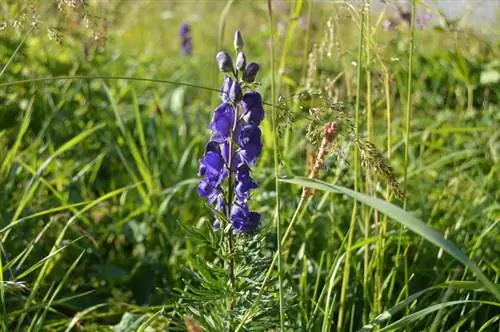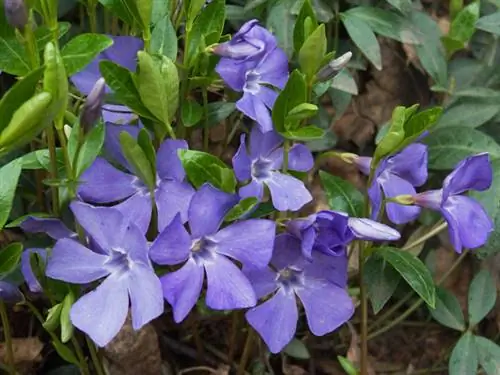- Author admin [email protected].
- Public 2023-12-16 16:46.
- Last modified 2025-01-23 11:20.
In addition to the wild varieties of monkshood, there are now also many new varieties available for private gardens with different flower colors. With a bit of luck, you can also discover natural occurrences of this fascinating plant when exploring nature.

Where does monkshood occur in nature?
The monkshood's natural occurrence is mainly found on mountain slopes, stream banks, springs, floodplain forests and swamp forests. There the plant prefers moist, humus- and nutrient-rich, clay-rich soils with a constant supply of moisture.
The usual locations of monkshood and their location conditions
The monkshood generally likes it relatively cool and moist; it does not tolerate drying out of the soil in its location well. Since monkshood prefers to colonize soils rich in humus and nutrients, it is also considered an indicator plant for locations with nitrogen-rich soils. Common places where monkshood occurs in nature are:
- mountain slopes
- Streamside
- Quellflure
- Auenwalder
- Broken forests
In these locations, a continuous supply of moisture is usually ensured. Monkshood also prefers clayey soils. While some varieties of monkshood prefer sunny to partially shaded locations, other representatives of this plant genus can also tolerate full shade.
The threat to the natural occurrence of monkshood
There are various reasons why monkshood is no longer as widespread in nature as it once was. One reason, for example, is that it is a plant with extremely poisonous leaves, roots and seeds. Since this can also kill grazing livestock, monkshood is not exactly a welcome guest on forage meadows in agriculture. In addition, more and more natural monkshood locations such as floodplain forests and stream banks are being destroyed by regulatory developments and settlement. On regularly mown roadsides, tall perennials such as the blue monkshood (Aconitum napellus), which grows to a height of up to 1.50 m, also do not reach seed maturity.
Attention species protection: Get monkshood from specialist retailers
Due to its now relatively limited occurrence in nature, monkshood is protected in various countries. That's why you should use seeds (€171.00 on Amazon) from specialist retailers when sowing in your garden. With the varieties on offer you not only have a larger choice of colors, but also inflorescences that usually consist of even more individual flowers.
Tip
It's not just for species conservation reasons that you should refrain from cutting off the impressive monkshood flowers for use in a bouquet during a mountain hike or a walk through the meadow landscape: the poisonous aconite can cause numbness and unpleasant sensations just by touching the plant Trigger burning.






